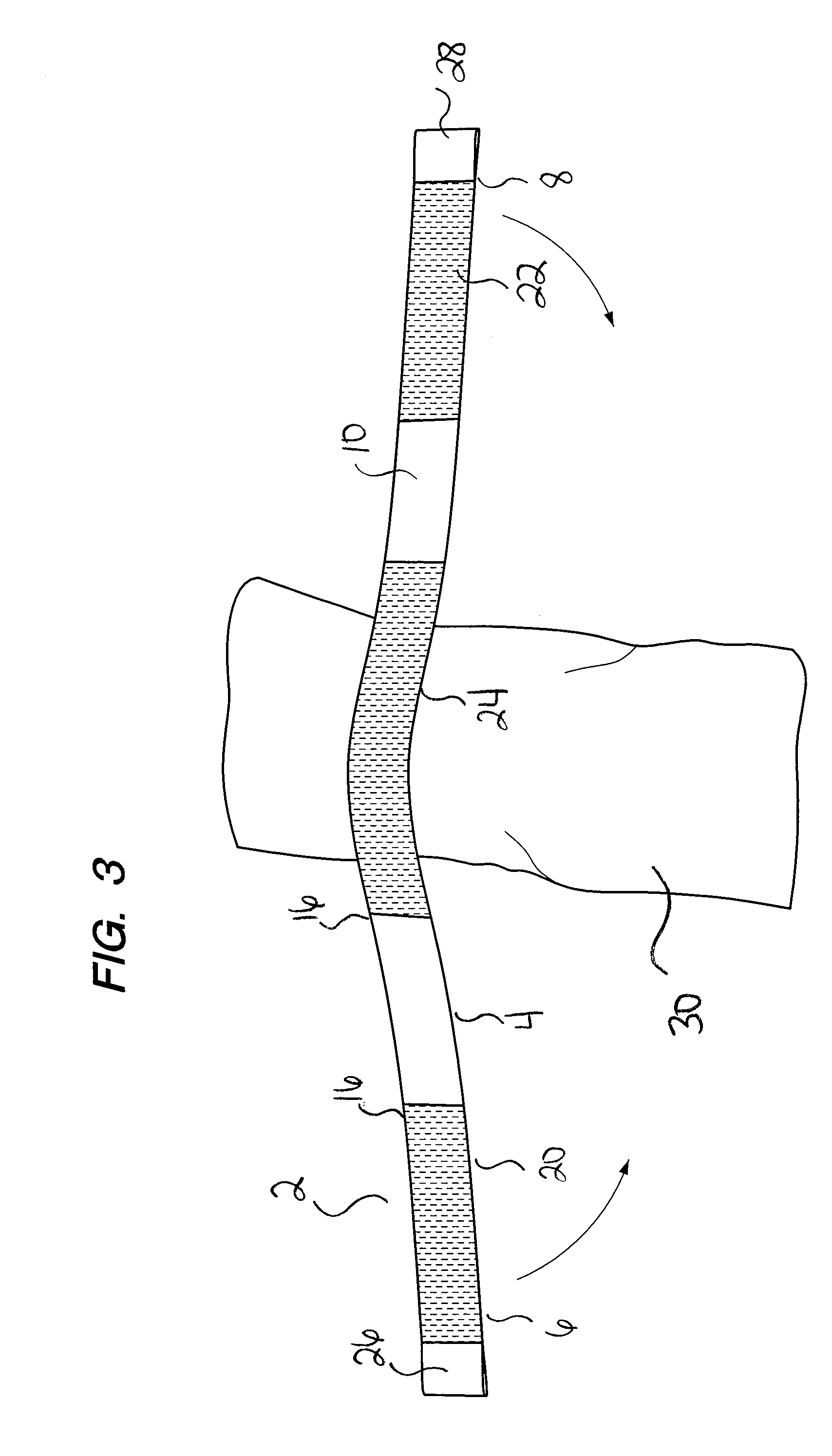Bi-Directional Tourniquet
a tourniquet and bi-directional technology, applied in the field of reverse trauma tourniquets, can solve the problems of increasing the consumption rate of blood products from the blood bank, affecting the triage process, and affecting the triage effect, so as to achieve the effect of fast and effective application
- Summary
- Abstract
- Description
- Claims
- Application Information
AI Technical Summary
Benefits of technology
Problems solved by technology
Method used
Image
Examples
Embodiment Construction
[0036]The products and methods of the present invention provide a versatile tourniquet that can be used in the field by military personnel, or in the clinical setting by medical personnel, or in a non-combat situation where trauma hemorrhage is an issue.
[0037]In this description, by the term reversible fastening means is meant any means, such as loop and hook fastener that allows secure fastening of the tourniquet components, but that can be simply and manually reversibly detached.
[0038]By tourniquet is meant any means for impeding blood flow or blood loss at a site by compressing a vessel or series of vessels by applying the strap, tube or other means at a region to selectively decrease blood flow and stop bleeding.
[0039]By bi-directional is meant that the tourniquet is supplied with two free ends, and can be applied by placing the center against the extremity and pulling the first free end to secure it against the center, and then pulling the opposite free end in the opposite dire...
PUM
 Login to View More
Login to View More Abstract
Description
Claims
Application Information
 Login to View More
Login to View More - R&D
- Intellectual Property
- Life Sciences
- Materials
- Tech Scout
- Unparalleled Data Quality
- Higher Quality Content
- 60% Fewer Hallucinations
Browse by: Latest US Patents, China's latest patents, Technical Efficacy Thesaurus, Application Domain, Technology Topic, Popular Technical Reports.
© 2025 PatSnap. All rights reserved.Legal|Privacy policy|Modern Slavery Act Transparency Statement|Sitemap|About US| Contact US: help@patsnap.com



